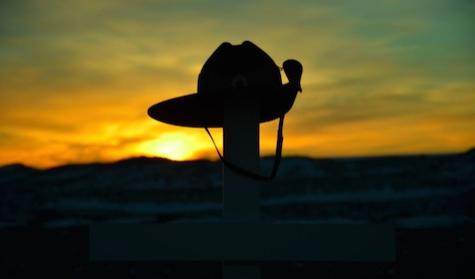In a display of courage, determination and mateship, the Australians and New Zealanders who made the ANZAC landings on 25 April 1915 created a legend which evokes pride and passion.
The ANZAC spirit of courage under fire, selflessness and unwavering loyalty, tenacity and mateship was forged in the battles at Gallipoli. The legend of the ANZACs has transcended time to become a symbol of what we value.
On ANZAC Day, we remember and reflect on the sacrifice of men and women who serve and served our nation in times of war and peace.
Veterans proudly display their medals, serving members of the Defence Force wear their uniforms and families of veterans who have passed honour their memory by wearing their medals.
This year marks the centenary of the original ANZAC landing at Gallipoli when we remember not only the original ANZACs who served at Gallipoli and the Western Front, but commemorate more than a century of service by Australian service men and women.
Lest We Forget.
Key symbols of ANZAC Day
- Dawn Service - commemorates the dawn landing at Gallipoli on 25th April 2015
- The Last Post - signifies the end of the day but also serves as a tribute to the dead
- Reveille and Rouse - the Reveille wakes the soldier at dawn. The Rouse is played after The Last Post in most major ceremonies, except the Dawn Service
- Silence - One or two minutes silence is a sign of respect.
The Ode
"They shall grow not old, as we that are left grow old;
Age shall not weary them, nor the years condemn.
At the going down of the sun and in the morning
We will remember them."
Local services
As well as the Dawn and Morning services in Gallipoli, Canberra and all major Australian and New Zealand cities, each regional city and town has their own local service on ANZAC Day.
Origins of the Dawn Service (via the Australian Warm Memorial)
It is often suggested that the Dawn Service observed on Anzac Day has its origins in a military routine still followed by the Australian Army. The half-light of dawn was one of the times most favoured for launching an attack. Soldiers in defensive positions were woken in the dark before dawn, so by the time first light crept across the battlefield they were awake, alert, and manning their weapons; this is still known as the “stand-to”. As dusk is equally favourable for battle, the stand-to was repeated at sunset.
After the First World War, returned soldiers sought the comradeship they had felt in those quiet, peaceful moments before dawn. A dawn vigil became the basis for commemoration in several places after the war.
It is difficult to say when the first dawn services were held, as many were instigated by veterans, clergymen, and civilians from all over the country. A dawn requiem mass was held at Albany as early as 1918, and a wreath-laying and commemoration took place at dawn in Toowoomba the following year.
In 1927 a group of returned men returning from an Anzac Day function held the night before came upon an elderly woman laying flowers at the as yet unfinished Sydney Cenotaph at dawn. Joining her in this private remembrance, the men later resolved to institute a dawn service the following year. Thus, 150 people gathered at the Cenotaph in 1928 for a wreathlaying and two minutes’ silence. This is generally regarded as the beginning of organised dawn services.
Over the years the ceremonies have developed into their modern form and have also seen an increased association with the dawn landings of 25 April 1915.

















__small.png)










